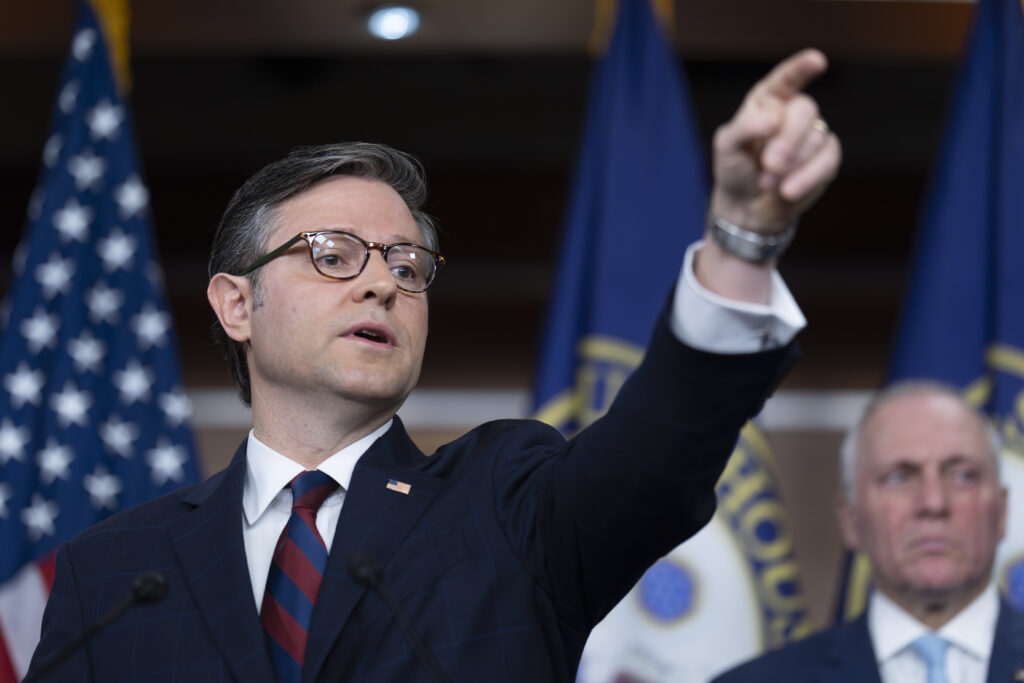Could Russia Try to Take Kyiv Again? The War in Ukraine is Far From Over
Since late August, Ukraine has driven Russian troops out of thousands of square kilometers of formerly occupied territory and are reportedly days from launching a renewed effort to capture the Russian-held city of Kherson. Many continue to write off the Russians, concluding the Ukrainian momentum is “irreversible,” implying Zelensky’s forces are on their way to winning the war by the end of this year. While serious analysts realize the war is far from over, there may be a growing danger to Ukraine few have considered; a vulnerability that could doom Kyiv to defeat.
When Russia launched its invasion last February, it initially appeared Kyiv was in danger of being surrounded and the regime captured. It didn’t take long, however, before Russia’s senior military leaders were exposed as being surprisingly inept at the strategic level, and its armed forces at being woefully unprepared for modern mobile warfare.
Why Russia Failed to Land a Knockout Blow in February
Russia violated one of the most fundamental principles of war at the outset. Carl von Clausewitz, the 18th Century Prussian general that penned the timeless strategy book, On War, wrote that a military commander should never bring all his “forces into play haphazardly,” but seek to concentrate them in a “decisive mass for the critical moment.” Once this decisive point had been identified and engaged, von Clausewitz continued, “it must be used with the greatest audacity.” Russia did nearly the opposite at the outset of its war against Ukraine.
Having allocated less than 200,000 total troops to try and subjugate a sprawling country of 41 million, Putin’s generals divided up this comparatively small force into four axes of advance, dissipating their strength everywhere. Had Moscow prioritized one area as the main effort and massed its forces there, it might have succeeded in overwhelming Zelensky’s troops and caused the Ukrainian Armed Forces (UAF) to collapse as a coherent fighting force. Instead, the opposite happened: by dispersing its strength, the Russians allowed the Ukrainian troops to contain the advance everywhere and quickly brought all four drives to a halt.
Once Putin’s offensive stalled, the insufficient number of troops on each axis became vulnerable to Ukrainian counterattacks. The first axis to fall was the Russian armored forces in the vicinity of Kyiv and Kharkiv. Faced with the reality of insufficient troop strength, Putin quickly withdrew his forces from the north, designated the Donbas as the priority effort, and concentrated his forces in the east. To support his main effort, Putin established economy of force missions east of Kharkiv and south in Kherson to protect his flank in the Donbas.
That redesignation made sense from Moscow’s perspective initially. From May through early July, it paid dividends, as Russia successfully captured large portions of the Donbas, reaching a high water mark with the capture of Lysychansk on 3 July. But by August Russian casualties began to pile up and, owing to the small invasion force, took the steam out of the attack. The UAF, having recovered from the psychological blow of being invaded, took advantage of Putin’s weaknesses.
Ukraine Strikes Back
Having mobilized hundreds of thousands of men in the opening days of the war, Ukraine covertly formed offensive formations in the north and south. Zelensky then did what Putin had failed to do, and concentrated his combat power where Russia was weakest – on the northern and southern flanks of the Donbas drive – and used masses of troops to overwhelm Russia’s weak economy-of-force formations, achieving up to an eight-to-one advantage in the Kharkiv region.
The moves caught Putin flat-footed and sent Russian lines reeling backwards in both Kharkiv and Kherson regions. But eventually, like the Ukrainians before them, the Russians recovered from the shock and have stiffened their defenses near the Oskil river in the north and along the Dnipro River adjacent to Kherson City in the south.
In response to Ukraine’s advances, Putin in September made a political move to annex the Ukrainian territory he occupied and a military move to mobilize up to 300,000 reservists. Zelensky is pressing his forces, as early as next week, to try and seize Kherson while Russian forces are still weak and before sizable reinforcements arrive. But Ukraine faces a bigger potential threat than merely more Russian formations coming to the relief of its defenders in Kherson.
What May Come Next
While Putin did belatedly recognize his initial error in dissipating his combat strength and then designated Donbas as the priority of effort, his generals showed remarkably little knowledge and creativity in how they conducted the offensive. Instead of seeking to isolate the Ukrainian defenders in their defensive positions and exploit an assailable weak flank, Russian generals plowed their troops head-on into the teeth of the defenses Ukraine had spent eight long years building.
The Russian drive eventually succeeded (mostly), but the cost to Russia in men and material was enormous. If Putin and his top military leaders reprise that lack of creativity again and mindlessly send another 100,000 troops to bludgeon the Ukrainian troops with frontal attacks, they will soak the battlefield in Russian and Ukrainian blood, but in the end may not have enough power to defeat the Ukrainian Armed Forces.
If that’s what Russia chooses to do, the UAF will have a legitimate shot at weathering the storm (though at great human cost). If, on the other hand, Russia learns from its strategic mistakes and pays attention to military history and combat fundamentals, Zelensky’s forces could be at great risk.
Ukraine’s Greatest Threat Comes from the Northwest, not from the North or East
When war broke out in February, Ukrainian troops in the Donbas were oriented directly east, were in their well-constructed and fortified defensive positions, ready for a frontal attack from Russia. That’s exactly what they got. Mentally, Ukraine was ready for the assault and showed remarkable courage and tenacity under scorching Russian rocket and artillery fire.
Ukraine slowly gave ground but extracted a premium price on the advancing enemy troops, eventually bringing Russia’s drive to a halt. In the current environment, Ukraine has again prepared its troops to face the expected next wave of Russian reinforcements and are likely mentally prepared again for a frontal assault from the east or north towards Kyiv (out of Belarus). Already, Zelensky has repositioned some troops to protect the capital city from a renewed Russian thrust entering from the Belarussian border.
We know that Russia has been stockpiling massive logistics necessary to support a large mobile force. In September alone, the Kremlin built up over 220,000 tons of fuel for its war machine in the six provinces bordering Ukraine. Moscow is clearly setting the stage for the deployment of large formations created as a result of Putin’s mobilization. The big question is: where will the blow land?
If Putin reprises the method he used in the Donbas and essentially tries to drive again towards Kyiv and into the teeth of the Ukrainian defenses, he runs the risk of again getting worn down by relentless UAF attacks, just as happened last February. Zelensky’s forces and population are very confident they could again thwart a Russian attempt to take Kyiv, no matter how long it took. But what if Putin doesn’t repeat his mistakes and attacks somewhere Zelensky isn’t expecting?
Since Russia long ago destroyed the bulk of Ukraine’s ability to produce military equipment and ammunition, Kyiv is wholly dependent on a non-stop stream of supplies from the West. The greatest threat to Ukraine’s ability to wage war, therefore, is the security of supply routes from their western borders to marshalling locations in the interior of their country. If Putin recognizes this vulnerability, he may mass his forces through Belarus again, but bypass Kyiv completely and strike towards Ukraine’s western borders.
The single greatest vulnerability for Ukraine is a Russian drive from Belarus, through Lutsk to Lviv. The vast majority of Ukrainian troops are presently massed in the country’s southeast about to fall on Kherson, the far east defending in Donbas, and in the northeast pressing the Russians in the Kharkiv region; there are almost no sizable formations in the western regions.
One scenario would be for Putin to position his attack formations in a way that would seem to validate Kyiv’s assumptions on where Russia would send its next wave. They might mass a sizable troop concentration east of Donbas and an even bigger concentration of forces north of Kyiv in Belarus. Doing so would make it appear Russian formations were about to pour into the Donbas to reinforce the current offensive and launch large forces south towards Kyiv in a second attempt to take the capitol.
Before Russia had a chance to launch, Zelensky would nearly have to move troops from the south to reinforce the Donbas grouping and bring significant reserves into Kyiv to protect the city. Russia might then move its troops in strength into the Donbas, fixing the entire eastern portion of the Ukraine army in place to try and repulse the attack. Meanwhile, the northern Russian force would strike, not to Kyiv, but continue west and drive towards Lutsk with an ultimate objective of Lviv for the purpose of severing nearly all resupply routes from the West. By the time Ukraine’s generals realized Russia was moving in force to the west, it would be nearly impossible to reposition its troops in time.
With the land route from Poland cut off, there would be virtually no way for Ukraine to sustain its war effort for more than a few months. The only other route the West could use to get war material to the UAF would be over the Carpathian Mountains along the Slovak and Romanian borders; an extremely difficult and restrictive path. Ukrainian forces in the Donbas would soon run out of artillery ammunition and rockets for its HIMARs systems, and it would no longer be able to get replacements for any of its armor.
Russia, meanwhile, would have an uninterrupted supply line to its troops and would be able to relentlessly hammer away along all fronts. It would then only be a matter of time before the sheer weight of Russian weaponry and troop concentrations – combined with a dwindling ammunition supply on the Ukraine side – could bleed Zelensky’s forces dry and force Ukraine to face the choice between seeking a negotiated settlement or suffer outright defeat.
How Ukraine Could Mitigate the Risk
As of this writing, Russia has not tipped its hand. Putin is building up his war machine in Russian regions bordering Ukraine and from their current marshalling areas, could strike in any number of directions, against a wide array of objectives. For all we know, Putin may continue his streak of questionable (or outright abominable) strategic and operational decisions and attack in areas and in ways against which the UAF will have the best chance of success.
But his generals may also see the same vulnerability I see, and he could order some version of the above scenario. Since such a course of action could prove fatal to Zelensky’s country, he must now begin taking preventive measures and creating contingency plans. A moment of truth will come for Ukraine in the coming months and Zelensky will be faced with some excruciating choices no matter what.
Whether the UAF takes Kherson in the coming weeks or whether Russia holds it won’t have much of an impact once Putin’s mobilized formations are in position and ready to launch their attacks. In the best of circumstances for Zelensky, he is going to face tremendous challenges. The successes he has won since the beginning of September have come at great cost, in terms of both personnel and equipment. It takes time to replenish losses and train new troops. But Ukraine will require not simply to replace losses, but to grow the number of troops considerably to meet the expected Russian attacks.

Ukraine T-84 Tank. Image Credit: Creative Commons.
Stalin is said to have once quipped that “quantity has a quality all its own” during World War II as justification for sending masses of troops to defeat his German opponents. In the Battle of Kursk, for example, the Red Army defeated the Wehrmacht in the largest tank battle of the war – but at the cost of a mind-blowing 800,000 Soviet casualties. It is possible Putin could send masses of mobilized troops, equipped with old T62 and T72 tanks and other outdated armor, and still overwhelm Ukrainian defenders. Zelensky, then, will have to build up his strength as quickly as he can but also formulate the best strategies possible.
His task is much harder than many believe. Zelensky and his general staff must prepare for the possibility that Russia does just reprise their initial pathways and try to overwhelm the UAF defenders with sheer numbers. But he also has to devise contingency plans for the most dangerous course of action described above. Failing in the first could cost staggering numbers of casualties and drag the war on indefinitely; failing in the second could cost Ukraine the war in months.
Given that time is so limited, Ukraine should cease offensive operations in the north, and along with their troops in the Donbas, begin, immediately digging in and building fortifications and multi-layered defensive works in anticipation of the next Russian attack. Kyiv should set a limit for how long it tries to capture Kherson, and as quickly as possible, build defensive works there as well. One way or another, there is a high probability that Ukraine’s troops in both the north, east, and south will face renewed Russian assaults this winter.
Meanwhile, Zelensky should begin building a reserve force on the western side of Kyiv. The force should be mobile, include a meaningful amount of armor, infantry, and self-propelled artillery. This reserve should be positioned near key east-west railroad lines. If the Russians stick to their old playbook and attack Kyiv from the north, that force could quickly move to defend the city. If Putin instead does the unexpected and moves to the Ukraine/Polish border, Zelensky’s reserve forces could quickly move via rail to defend Lviv or Lutsk. That still won’t guarantee success, but without a ready force, properly positioned, and the presence of an existing contingency plan, the chances of successfully interdicting an unexpected Russian drive west are very low.
Conclusion
This is war. It is horrible, sometimes turns the best of men into beasts, and always leaves bitter scars – both physical and emotional – on everyone it touches. Combat is usually chaotic, unpredictable, and stressful in ways few can imagine who haven’t experienced it – and “easy answers” don’t exist. No matter what happens with the current round of battles in Kherson and Kharkiv, it’s what comes next that could determine the war’s outcome. Zelensky will be faced with enormous pressure to respond to dynamic events.
Every choice he makes will have negative consequences and force his side to accept risk; there is no single right answer. Yet he will be required to make decisions with life-and-death consequences. Russia has thus far demonstrated sometimes shocking levels of incompetence, at the highest levels. But the Russian army has also shown a tenacity of its own and an ability to fight well in some battles. Zelensky has to prepare for the appearance of both sides of that Russian coin.

A Russian tank under attack by a drone from Ukraine. Image Credit: YouTube/Ukrainian military.
Ukraine has to be ready to meet an enemy that seeks to bludgeon its way to victory using sheer numbers and overwhelming firepower, and it has to be ready to face an improving foe that learns from mistakes and comes back stronger and craftier in subsequent battles. Despite all the present euphoria in the West at recent Ukrainian success, Ukraine still faces an enemy with a number of strategic advantages.
Whether Zelensky can weather the coming Russian onslaught will depend in large measure on how prepared he is to meet Putin’s most dangerous moves.
Author Expertise: Now a 19FortyFive Contributing Editor, Daniel L. Davis is a Senior Fellow for Defense Priorities and a former Lt. Col. in the U.S. Army who deployed into combat zones four times. He is the author of “The Eleventh Hour in 2020 America.” Follow him @DanielLDavis.
" Conservative News Daily does not always share or support the views and opinions expressed here; they are just those of the writer."





